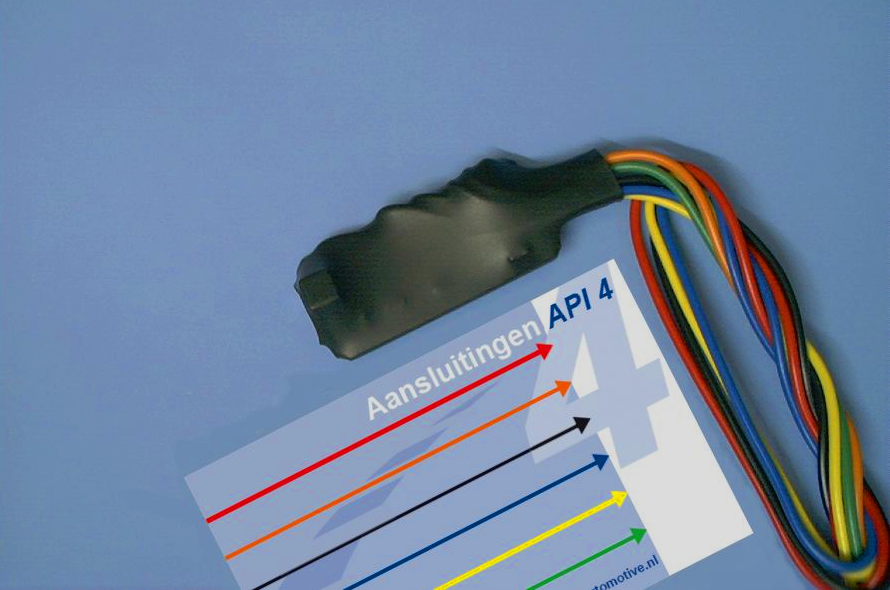Amplifier-Divider-Doubler

Is the GPS-navigation system still ‘driving’ while the car has stopped? Or did your customer return after three weeks with an error in the engine management system (EMS) of the car in which you installed a fleetmanagement system? Just a few problems that often occur when the electronic speedsignal is being tapped. Install an API and your problems are solved!
With the high technology, used in our cars today, it is not possible to just tap signals from the vehicle, needed for a cruise-control, a GPS navigation system or a boardcomputer. The electronic vehicle speedsignal can be too heavily charged, which causes the speedometer to deviate or stop working at all. Not to mention the influence on the electronic system of the vehicle, where problems reveal themselves only after a period of time.
More and more manufacturers use a weak signal from the EMS to make the speedometer work. If you want to tap this signal you need a good interface to bring problems to a minimum!
With the high technology, used in our cars today, it is not possible to just tap signals from the vehicle, needed for a cruise-control, a GPS navigation system or a boardcomputer. The electronic vehicle speedsignal can be too heavily charged, which causes the speedometer to deviate or stop working at all. Not to mention the influence on the electronic system of the vehicle, where problems reveal themselves only after a period of time.
More and more manufacturers use a weak signal from the EMS to make the speedometer work. If you want to tap this signal you need a good interface to bring problems to a minimum!
Therefore we have developed the API that can be used on many signals in the vehicle. The filter amplifies any signal into a 10 volt squarepulse which easily can be dealt with by for example a GPSnavigation system. The API can be used not only for a speedometer signal, but also for a RPM signal. In new cars the RPM signal is often taken from the EMS and not, as in the past, straight from the generator or RPM sensor. Extra attention was put in filtering peak-voltages and the protection of the API as well as the connected systems against high voltages. The signals in the vehicle are, with an API, only minimally charged. This means that even for the most sensitive signals, tapping will have no side effects. The API is built with carefully chosen high-quality SMD components, which provide a high accuracy and reliability.
Frequency range
The frequency range is tested up to 20 kHz. Using a WD-number (number of pulses per kilometre) of 39000 and a speed of 200 km/hour, the number of pulses/second (=Hz): 39000 x 200 /3600 = 2,166 kHz.
Specifications
MKP 6649500003
Characteristics of the API-version 4:
MKP 6649500004
Characteristics of the API-version 4D:
Frequency range
The frequency range is tested up to 20 kHz. Using a WD-number (number of pulses per kilometre) of 39000 and a speed of 200 km/hour, the number of pulses/second (=Hz): 39000 x 200 /3600 = 2,166 kHz.
Specifications
- Input resistance > 4MW
- Frequency range 0 – 4 kHz (min)
- Supply voltage 10-15 Vdc and 15-30 Vdc
- Current absorbed 20 mA permanent
- Input sensitivity adjustable range between ±1 Vtt and ±8 Vtt
- Output 10 V (top) square wave-form (frequency 1:1)
- Output 10 V (top) square wave-form (frequency divided by 4)
- Temperature range -20 °C to +70 °C
- Dimensions 50 x 25 x 10 mm
MKP 6649500003
Characteristics of the API-version 4:
- Standard suitable for 12Volt and 24Volt connection.
- Built-in "pulsestop". A special filter stopping the speedpulses and spikes on the signal when a car has stopped.
- Built-in frequency divider, besides a normal non-divided output, there’s always a divided output available.
- Even better filtering, therefore the output on the API4 is a very straight and clear 10 Volt square wave form.
- Adjustable input sensitivity. With this adjustment the API4 can even on extremely disturbed speed signals, still produce a perfect output.
MKP 6649500004
Characteristics of the API-version 4D:
- Standard suitable for 12Volt and 24Volt connection.
- Built-in "pulsestop". A special filter stopping the speedpulses and spikes on the signal when a car has stopped.
- Built-in frequency doubler, besides a normal non-doubler output.
- Even better filtering, therefore the output on the API4 is a very straight and clear 10 Volt square wave form.
- Adjustable input sensitivity. With this adjustment the API4 can even on extremely disturbed speed signals, still produce a perfect output.